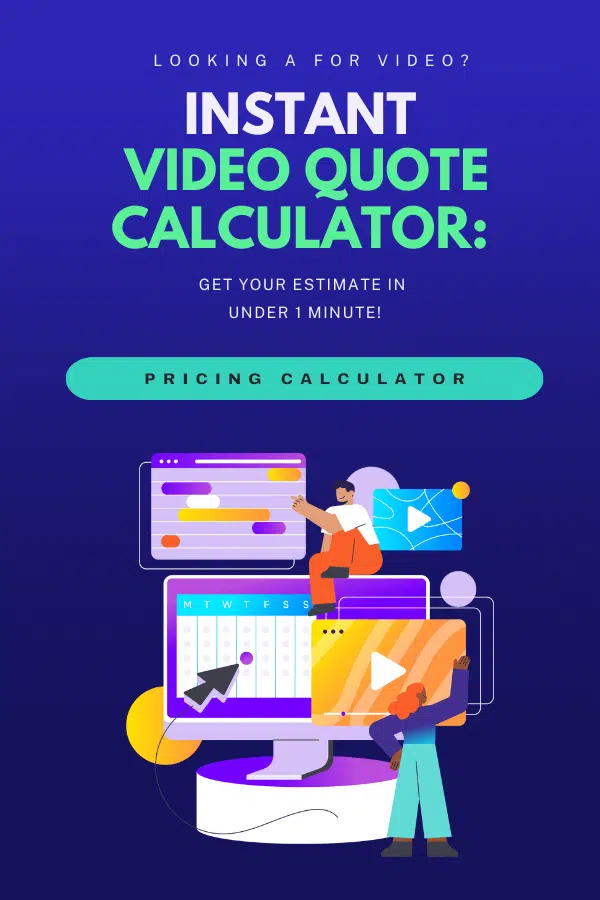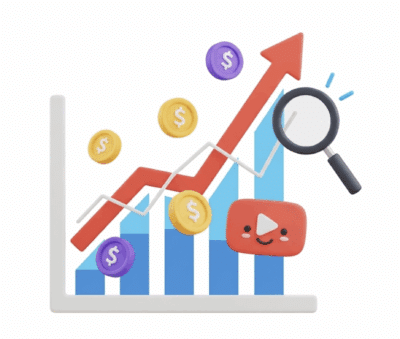A Step-By-Step Guide to a Successful Search Engine Marketing Strategy
09/08/21
Author: Florencia Oliveto
8 min reading
StrategyMarketing

With digital marketing strategies currently dominating the scene, it’s no wonder you are curious about search engine marketing methods. After all, these practices stand out precisely because of the fantastic results they tend to deliver, all while being super cost-effective. And the best part? They help you reach out to audiences who are really motivated to learn more about your field, products, or services.
However, discovering how to set up a search engine marketing plan is not as easy as finding information about SEO – SEM’s organic counterpart. If you search for SEM on the web, you’ll find tons of misleading terms and little practical, actual intel.
We wanted to make something different, so here at Yum Yum Videos, we’ve put together this in-depth guide that covers the topic’s essentials and provides actionable steps to develop an effective Search Engine Marketing strategy.
Ready to start?
Content:
What is Search Engine Marketing?
What’s the Difference between SEM and SEO?
Why Should You Carry out a Search Engine Marketing Plan?
How to Develop a Search Engine Marketing Strategy?
Table of Contents
What is Search Engine Marketing?
Search Engine Marketing – or SEM, for short – is a digital marketing practice that entails promoting products or services through ads on search engine result pages. Ads that are shown only to those who’ve entered a specific keyword in the search bar.
You’ve seen these before: they appear at the top or bottom of SERPs as text-based results or in carrousels with pictures and prices of product listings. Regardless of their appearance, though, these ads are paid with the PPC or CPC model (Pay-per-click or Cost-Pay-Click).
You’ll often hear those terms misused as a synonym for SEM, but in truth, PPC can also be applied to online ads outside search engine marketing strategies. It’s simply a model in which the advertiser only pays for the times their ad is clicked on, not for the times it’s shown.
What’s the Difference between SEM and SEO?
Since these terms are often confused, it’s worth further differentiating them before moving forward.
Some see SEM as an umbrella term that comprises both paid and organic marketing practices to rank high on SERPs. The expert’s consensus, though, is that search engine marketing methods always involve paid ads. On the other hand, SEO entails earning a place in SERPs organically, producing popular and quality content.
None of these strategies is necessarily better or worse than the other – they simply work best for different goals.
SEO delivers results in the long term and works wonders for appealing to customers at the top of the funnel. Meanwhile, SEM usually brings about faster results and targets buyers at the bottom of the funnel.
The ideal way to go about it is to marry a Search Engine Optimization and a Search Engine Marketing strategy to unleash the full digital marketing potential of result pages.
Why Should You Carry Out a Search Engine Marketing Plan?
We have solid reasons to believe search engine marketing methods could benefit any type of business regardless of their size or field. Let’s take a look:
- It’s cost-effective. Thanks, PPC advertisement!
- It’s aimed at the right audience. The ads are shown to those who have searched for queries related to your field, so they are highly likely to be interested in it, to begin with!
- It allows you to reach out exclusively to your local audience through geo-targeted ads.
- It lets you fight your competitors by appearing under queries related to their brand.
- It can boost your brand awareness since it increases your online visibility.
- It can raise your website’s traffic.
- It’s measurable! Like most digital strategies, you can examine your campaign’s performance through search engine marketing analysis.
How to Develop a Search Engine Marketing Strategy?
Enough theory for now! Let’s get down to business and explore how to carry out an effective search engine marketing plan in three simple but vital steps:
1. Research Keywords
The idea here is to discover which keywords related to your field are being searched by your audience the most. This way, you’ll ensure to invest in a keyword that can drive lots of potential customers.
There are many SEM analysis tools that can inform you of the search volume – a.k.a.: popularity – of specific keywords. These platforms can indicate how much it would cost to display an ad under a particular query and suggest similar keywords.
Now, if you want to come up with keywords by yourself, you can start by thinking of terms that describe your brand, competition, product, service, or even the specific theme of your animated explainer video.
It’s recommended that you aim for keywords with “high commercial intent”. These are queries that mention specific brands, products, or services and terms like “Buy,” “Discount,” and “Best,” among others.
Keywords like these suggest the user is looking for something to purchase, so they are particularly beneficial for a search engine marketing strategy directed at the bottom of the funnel.
2. Bid on Your Chosen Keyword
Once you’ve chosen a keyword, you’ll partake in an ad auction. Since you’ll most likely develop a search engine marketing strategy with Google Ads, we’ll cover the bidding process on that famous platform.
To enter the auction, you need to select the keyword you’ll bid on and indicate the maximum amount of money you are willing to pay for each click your ad gets.
Google will take it from there. The next time someone searches for that keyword, the auction will take place. Your ad will compete with those from other advertisers, and the platform will define which ads will be shown and in which order.
Unlike a regular auction, the advertiser who has made the highest offer won’t necessarily win. Google gives great importance to presenting relevant results to users, so it also takes the ads’ Quality Score and the Expected Impact of Ad Extensions into account.
The quality score is determined by the number of clicks your ad is expected to get (based on historical performance data), how relevant it is to the query that’ll trigger it, and how good the User Experience is on your landing page.
Last but not least, Google checks whether your ad offers additional information that can benefit its performance (phone number, links, location, etc.).
All these factors combined determine whether your ad will make the cut and land at the top.
The good news is that if you win, you won’t necessarily have to pay as much as you’ve bid. You’ll have to invest just enough to maintain your position in the SERP. The better your quality score and extensions are, the less you’ll have to pay!
3. Conduct Search Engine Marketing Analysis
Now your search engine marketing strategy is up and running; it’s time you take a moment to analyze its performance.
I know this may sound like an afterthought practice, but it’s actually very important. It can make a huge difference in your strategy in the long run, helping you discover leaks in your campaign and make smarter decisions in the future. Not to mention, it will save you tons of money on underperforming keywords!
We don’t want you to open your search engine marketing analysis tool and stare blankly at the figures and charts on the screen. So, let’s go through the metrics you should pay attention to and what they represent:
- Impressions. This metric informs the number of times your ad was displayed on the SERP.
- Click-Through Rate (CTR). It represents how many clicks your ad got.
- Impressions Share. This percentage hints at your ad’s eligibility in auctions. It’s obtained by dividing your actual number of impressions by the number of impressions you could’ve got. If it surpasses 60%, you are on the right track!
- Wasted Spend. A percentage you’ll want to keep lower than 30% – ideally, as low as possible! It indicates the budget you’ve spent on keywords that drove no results.
- Time Spent on Site and Page Depth. Both examine how your audience behaved once they got into your ad’s landing page. The first metric measures how long they stayed on your website, whereas the latter indicates how many pages they browsed during that visit.
The Takeaway
Some digital marketing amateurs dive into search engine marketing methods believing these are a lazier version of SEO practices. But don’t get the wrong idea: While setting up an SEM campaign is hardly ever as challenging as working on your SEO, it’s no child’s play either.
For starters, money is not the only factor that comes into play in an ad auction. It’s also critical to display top-performing ads and have relevant and user-friendly landing pages. Needless to say, it takes time and effort to get those aspects right.
And let’s not forget about search engine marketing analysis! This practice is crucial for creating cost-effective campaigns for the long run – doubly so when your SEM ads grow! It can be difficult to manage several campaigns at the same time, but you must keep testing your keywords and measuring your ads’ performance regularly so you can ensure excellent results.
Oh! There’s one last step we forgot to mention: serve yourself a glass of champagne and start enjoying the benefits of a successful search engine marketing strategy!

Florencia Oliveto – Content Writer
A skilled writer with a background in audiovisual design. She combines her knowledge of the video production process with a genuine passion for digital marketing. Her goal is to deliver high-value content that’s not only educational but also engaging and easy to understand.










